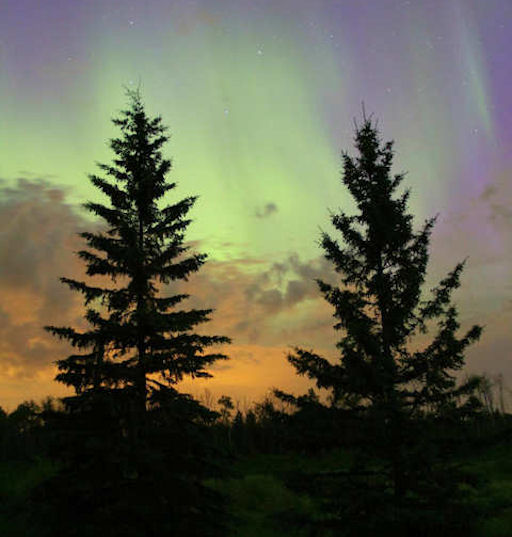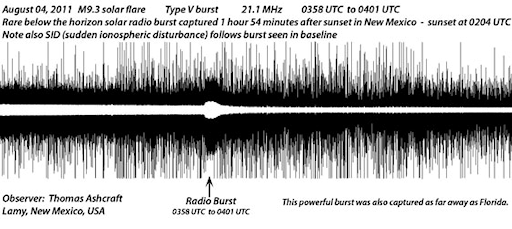They came from outer space--and you can have one! Genuine meteorites are now on sale in the Space Weather Store. | | |
BIG SUNSPOT GETS BIGGER: Behemoth sunspot 1263 has almost doubled in size this weekend. A 28-hour movie from NASA's Solar Dynamics Observatory shows the spot developing a tail that has added some 50,000 km of length to the active region. This development may increase the likelihood of a strong flare. Images: #1, #2, #3
WEEKEND AURORAS: A widespread display of auroras erupted late Friday, Aug. 5th, when a double-CME hit Earth's magnetic field and sparked a G4-category geomagnetic storm. "It was the most impressive display I've seen in years," reports Lance Taylor of Edmonton, Alberta. "From 10:00 PM on Friday to 3:00 AM on Saturday, the sky was pulsing from horizon to horizon in every direction." He took this picture during the most intense phase of the storm:

The show was not restricted to Canada. Northern Lights spilled across the border into the United States as far south as Utah, Colorado, and Nebraska. (Note: The faint red lights photographed in Nebraska are typical of low-latitude auroras during major geomagnetic storms.) Observers in Europe as far south as England, Germany and Poland also witnessed a fine display. Browse the gallery for more examples.
Did you miss the show? Don't let that happen again. Sign up for geomagnetic storm alerts: text, voice.
UPDATED: August 2011 Aurora Gallery
[previous Augusts: 2010, 2009, 2008, 2007, 2006, 2005, 2004, 2003, 2002]
NIGHT-TIME SOLAR RADIO BURST: The M9-class solar flare of August 4th produced a burst of shortwave static so powerful that receivers on Earth picked it up after sunset. "A RadioJove observer in Florida recorded the burst when the sun was 38 degrees below the horizon," reports amateur radio astronomer Thomas Ashcraft. Ashcraft's own radio telescope in New Mexico recorded the event 1 hour and 54 minutes after sunset:

"To my knowledge, receptions like this are very rare," says Ashcraft.
Indeed they are. This event brings to mind the iconic night-time solar radio burst of March 8, 1958. Five radio telescopes at the University of Florida picked up emissions from the sun while observing the planet Jupiter in tthe middle of the night. On the other side of the world, radio astronomers in daylit Australia confirmed that a powerful solar radio burst had taken place at that exact time. The event is described in a 1959 Nature paper by pioneering radio astronomers Alex Smith and Tom Carr. They considered the possibility that solar radio waves might have been reflected by the Moon or carried to the night side of Earth by ionospheric ducting. In tthe end, they could not conclusively explain what happened and to this day night-time solar radio bursts remain a puzzle.
2011 Noctilucent Cloud Gallery
[previous years: 2003, 2004, 2005, 2006, 2007, 2008, 2009]

